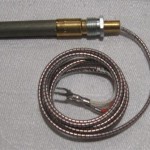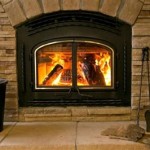Victorian Fireplace Cast Iron Inserts: A Study in Aesthetics and Function
Victorian fireplace cast iron inserts represent a significant element of architectural and interior design from the Victorian era (roughly 1837-1901). These inserts, typically crafted from cast iron, served both a functional purpose of heating rooms and a decorative role, reflecting the Victorian penchant for ornamentation and elaborate detailing. Their enduring appeal lies in their ability to evoke a sense of history, elegance, and warmth, making them a popular choice for homeowners seeking to restore or enhance period properties, or introduce a touch of historical charm to contemporary spaces.
The prevalence of cast iron as a material arose from its durability, affordability (relative to other metals), and its capability to be molded into intricate designs. The Industrial Revolution provided the mass production methods necessary to make these inserts widely available, solidifying their place in Victorian homes across various social classes. Examining these inserts offers a valuable insight into the aesthetics, engineering, and social history of the period.
The Evolution of Design and Ornamentation
Victorian fireplace cast iron inserts underwent a remarkable evolution in design throughout the era, reflecting changes in aesthetic tastes and technological advancements. Early Victorian inserts, prevalent during the first half of the 19th century, often featured neoclassical motifs, drawing inspiration from Greek and Roman architecture. These designs typically incorporated symmetrical patterns, fluted columns, and representations of classical figures or foliage. The emphasis was on balance and order, reflecting the prevailing sense of restraint and formality in society.
As the Victorian era progressed, designs became increasingly elaborate and ornate. The rise of the Gothic Revival and the influence of the Arts and Crafts movement contributed to a diversification of styles. Inserts began to incorporate foliate scrolls, geometric patterns, and stylized representations of animals and mythical creatures. The use of high-relief castings became more common, adding depth and dimension to the designs. The introduction of new casting techniques allowed for greater complexity and detail in the ornamentation.
Furthermore, the introduction of colored enamels and tiles into the designs of the fireplace inserts marked a significant departure. These additions allowed for the incorporation of vibrant colors and intricate patterns, transforming the fireplace into a focal point of the room. The use of colored tiles often complemented the overall color scheme of the interior, creating a unified and harmonious aesthetic. The increased access to different materials further contributed to the variety of styles that persisted throughout the Victorian period.
The later Victorian era also witnessed the emergence of Art Nouveau influences, characterized by flowing lines, organic forms, and stylized depictions of nature. These inserts often featured whiplash curves, floral motifs, and representations of insects and birds. The Art Nouveau style represented a reaction against the perceived rigidity of earlier Victorian designs and embraced a more fluid and sensual aesthetic.
Functionality and Technological Advancements
Beyond their aesthetic appeal, Victorian fireplace cast iron inserts served a crucial functional purpose: providing heat to homes. The design of these inserts was carefully considered to maximize heat radiation and efficiency. The cast iron material itself is an excellent conductor of heat, allowing it to quickly absorb and radiate warmth into the surrounding room. The enclosed firebox within the insert helped to contain the fire and prevent drafts, improving combustion and thermal output.
Early fireplace inserts often featured a simple grate for holding the fuel (typically coal or wood) and a flue for venting smoke and gases. However, as the Victorian era progressed, inventors and engineers developed various improvements to enhance the efficiency and safety of these appliances. One key innovation was the introduction of dampers, which allowed homeowners to control the airflow to the fire, regulating the burning rate and heat output. Dampers also helped to prevent drafts when the fireplace was not in use.
Another significant advancement was the development of improved flue designs. Early flues were often simple vertical chimneys, which could be prone to downdrafts and inefficient venting. Later designs incorporated features such as bends and baffles to improve airflow and reduce the risk of smoke spillage into the room. These improvements not only enhanced safety but also increased the overall efficiency of the fireplace, allowing homeowners to heat their homes more effectively.
The development of coal-burning grates and fireboxes also played a crucial role in improving the functionality of Victorian fireplace inserts. Coal, which became increasingly affordable and widely available during the Victorian era, provided a more efficient and long-lasting source of fuel compared to wood. Coal-burning grates were specifically designed to optimize the combustion of coal, ensuring a steady and even burn. Fireboxes were lined with refractory materials, such as firebrick, to protect the cast iron from the intense heat and prolong the lifespan of the insert.
Social and Cultural Significance
Victorian fireplace cast iron inserts held significant social and cultural meaning beyond their functional and aesthetic roles. In Victorian society, the fireplace served as a central gathering point for families and friends. It was a place for conversation, relaxation, and shared activities. The fireplace insert, as the focal point of the room, often reflected the homeowner's social status and personal taste.
The level of ornamentation and detail on a fireplace insert could be indicative of the homeowner's wealth and social standing. Elaborately decorated inserts, featuring intricate castings, colored enamels, and expensive materials, were often found in the homes of the upper and middle classes. Simpler, more functional inserts were more common in working-class homes. The choice of design and materials reflected the homeowner's aspirations and their desire to project a certain image to visitors.
Furthermore, the fireplace served as a symbol of domesticity and family life. In Victorian literature and art, the hearth was often depicted as a warm and inviting space, representing the center of the home and the bonds of family. The fireplace insert, as the visual representation of the hearth, played a key role in conveying this message. It was a symbol of comfort, security, and belonging.
The act of tending to the fireplace also held social and cultural significance. Lighting and maintaining the fire was often the responsibility of the head of the household, or in some cases, the servants. This task was seen as a sign of responsibility and care, and it reinforced the traditional roles within the family. The sharing of stories and songs around the fire was a common pastime, strengthening family bonds and preserving cultural traditions.
The enduring popularity of Victorian fireplace cast iron inserts highlights their lasting impact on interior design and social history. Their functionality is undeniable, providing warmth and heat to homes. Their aesthetic appeal, with intricate designs and varied styles, enriches the visual character of spaces. Their role as a social and cultural artifact offers insights into the values and traditions of the Victorian era. Therefore, Victorian fireplace inserts continue to attract attention from homeowners, designers, and historians alike.

A Mid Victorian Cast Iron Fireplace Insert Lassco England S Prime Resource For Architectural Antiques Salvage Curiosities

Tradition Cast Iron Fireplace Insert 38 Victorian

Normandy Cast Iron Tiled Insert 40 Victorian Fireplace

Gallery Collection Prince Tiled Cast Iron Insert From Direct Fireplaces

Lytton Cast Iron Fireplace Insert 37 Victorian

Victorian Cast Iron Insert 4222i Antique Fireplace Co

Victorian Cast Iron Fire Surround And Tiled Insert

Gallery Henley Cast Iron Fireplace Insert Flames Co

Stovax Classical Arched Insert Cast Fireplace Bonfire Fireplaces

Bolton Cast Iron Fireplace Insert 37 Victorian
Related Posts








